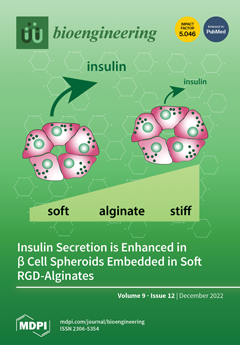The strain designated as AN120528
T was isolated from farmland soil in South Korea. This strain grows well on R2A medium at 28 °C. The cells are an off-white colour and have no hyphae. The phylogenetic analysis indicated that the strain is a
[...] Read more.
The strain designated as AN120528
T was isolated from farmland soil in South Korea. This strain grows well on R2A medium at 28 °C. The cells are an off-white colour and have no hyphae. The phylogenetic analysis indicated that the strain is a member of the genus
Shimazuella with a 98.11% similarity to
Shimazuella alba KC615
T and a 97.05% similarity to
S.
kribbensis KCTC 9933
T, respectively. The strain AN120528
T shares common chemotaxonomic features with the other two type strains in the genus. It has MK-9 (H
4) and MK-10 (H
4) as its predominant menaquinones. The major fatty acids are
iso-C
14:0,
iso-C
15:0,
anteiso-C
15:0 and
iso-C
16:0.
Diphosphatidylglycerol (DPG),
phosphatidylethanolamine (PE),
phosphatidylglycerol (PG),
lipids (L), and
aminolipids (AL) were identified as the major cellular polar lipids. Analysis of the peptidoglycan showed the presence of meso-diaminopimelic acid. Whole-genome sequencing revealed that the genome of the strain is approximately 3.3 Mbp in size. The strain showed a 77.5% average nucleotide identity (ANI) with
S.
alba KC615
T. The genomic DNA (gDNA) G + C content is 39.0%. Based on polyphasic taxonomy analysis, it is proposed that this strain, AN120528
T, represents a novel species in the genus
Shimazuella, designated as
Shimazuella soli sp. nov. The type stain is AN120528
T (=KCTC 39810
T = DSM 103571
T). Furthermore, shimazuellin I, a new 15-amino-acid peptide, was discovered in the AN120528
T through genome mining; it has the features of a lasso peptide, containing eight amino acids (-G-Q-G-G-S-N-N-D-) that form a macrolactam ring and seven amino acids (-D-G-W-Y-H-S-K-) that form a tail.
Full article






